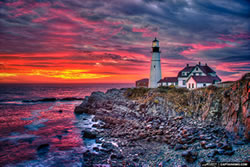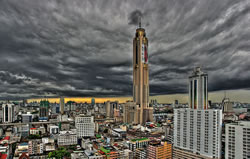If you have an interest in photography, it’s likely you’ll have seen the acronym HDR in use. The letters stand for High Dynamic Range, a style of photography that has the potential to create clear, well-defined images with outstanding detail. In this article we’ll explain all about HDR photography and why it’s such a useful technique for producing high quality photos. In my business there’s no real call for this type of photography but I’ve been asked about it by many students on my classes so I thought this would be interesting.
 High Dynamic Range photography involves taking multiple shots of the same subject at different exposures and combining them using photo editing software.
High Dynamic Range photography involves taking multiple shots of the same subject at different exposures and combining them using photo editing software.
Why is HDR photography useful?
When light conditions are poor, usually photographers have to sacrifice some of the detail in their photography. This is called shooting in a standard or low dynamic range. A high dynamic range allows photographers to capture all of their subject’s detail and create an image with pure clarity.
How does HDR photography work?
HDR photography involves taking multiple images of the same subject at different exposures. The image data is then merged to create a single photograph with a level of detail that ordinarily would be impossible to achieve.
In order to combine the image data to create HDR photographs, professional photographers like Caroline Trotter Photography use image editing software.
Essential techniques for great HDR photography
 Use a tripod – A vital part of HDR photography is shooting the same scene using different exposures. This means that the camera cannot move in between shots or the images won’t line up successfully. With this in mind, it is best to use a tripod. This prevents accidental movements and keeps images perfectly aligned.
Use a tripod – A vital part of HDR photography is shooting the same scene using different exposures. This means that the camera cannot move in between shots or the images won’t line up successfully. With this in mind, it is best to use a tripod. This prevents accidental movements and keeps images perfectly aligned.
Take as many shots as needed – There is no rule on how many photographs that are needed to take to achieve a high quality HDR photograph. Some photographers may be able to do it in four, whereas others may need nine or ten shots. The more shots taken, the more that’s required during the editing stage – but more photos can lead to a better end product.
Get the white balance right – When shooting JPEGs it’s crucial the white balance and colours of your image are perfect on the camera. Photographers shooting RAWs; are able to find-tune the white balance and colours using RAW processing software, before creating the HDR images. It is important to apply the same white balance and colour settings to all of the images being merged together to create the HDR photograph.
Possible topics for HDR photography
HDR photography is well suited to a variety of topics, but is especially suited to:
- Commercial photography – particularly for high-quality images for website product images and corporate brochureware
- Landscape photography – stunning photos can be produced of landscapes and the great outdoors
- Portrait photography – HDR photography can add a unique twist to a portrait!
- A wide variety of other topics – speak to use if there’s another category you’d like HR photography for
Final thoughts on HDR photography
HDR photography is a technique well worth considering for its unique qualities and characteristics which can supply photography that is a little unusual.
If you are looking to buy some HDR photography or have any other photographic requirements give us a call here at Caroline Trotter Photography on 07933 510243 or contact us by Email at caroline@carolinetrotter.co.uk.
Image credits: Captain Kimo


